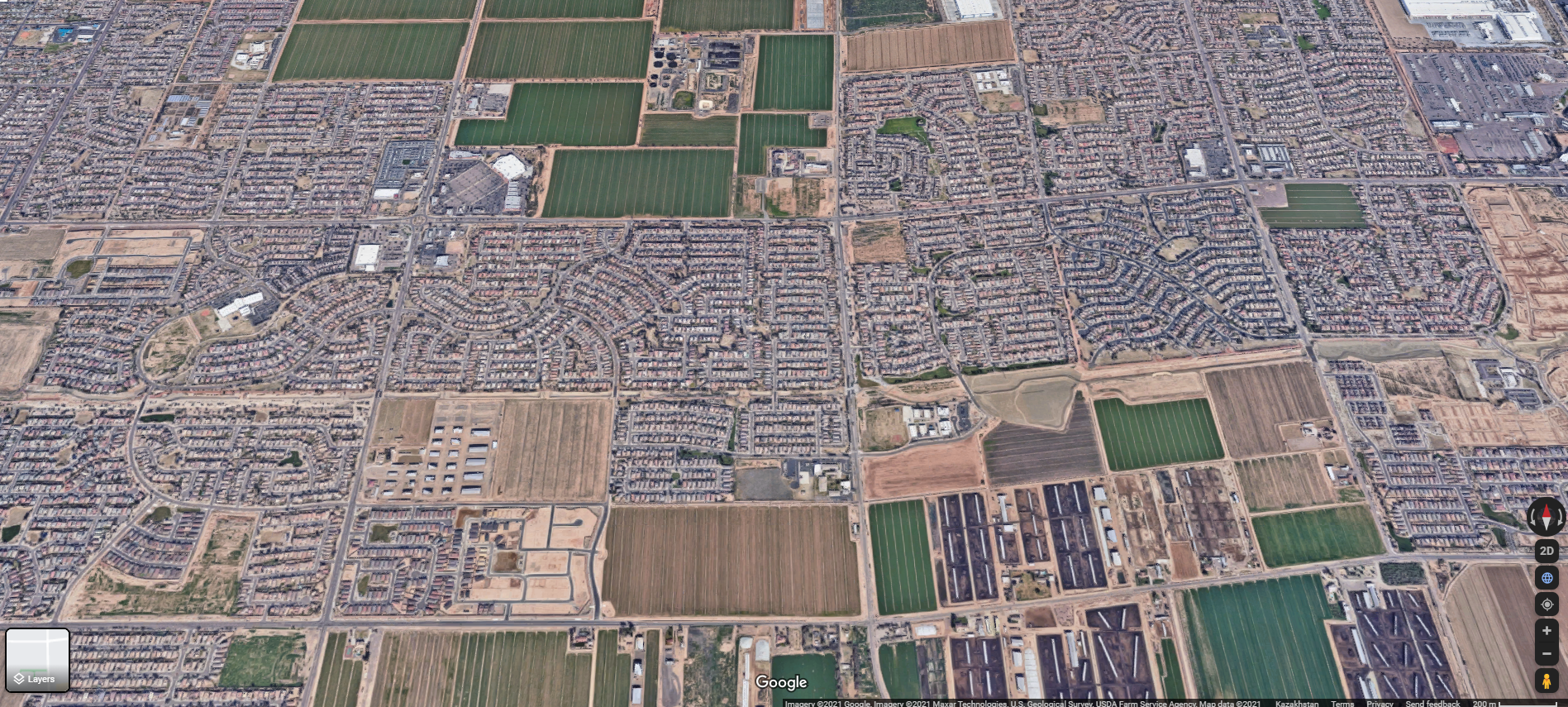
blogs
10 acres for individual housing construction (IHC): a panacea or utopia. Case of the city of Atyrau
2 april 2021

The growth of cities due to an increase in population is often accompanied by the expansion of city boundaries and the development of new territories for various buildings. At the same time, the authorities have different approaches to the development of new territories: the transfer of industrial production, warehouses, large retail premises from the center, the construction of new microdistricts, the allocation of plots for individual development.
In Kazakhstan, according to the Land Code, every citizen once has the right to receive 10 acres of land for individual housing construction (IHC). More than 1.5 million Kazakhstanis are queuing up for plots. Among all regions, the western regions stand out, where, on average, every 5 resident claims to free plots (in the southern regions, on average, every 12 residents, in the northern and eastern regions - every 31).
When issuing a land plot, akimats must, at a minimum, provide the sites with water and power supply networks. As a maximum - meet all modern living standards: high-quality roads, street lighting, public transport, high-speed Internet, public spaces.
However, queues are shortening extremely slowly; it is unlikely that it will be possible to provide everyone with the desired 10 acres in the foreseeable future. Also, there are confirmed cases of illegal allocation of land plots out of order, receiving land plots for further sale; high corruption risks in the distribution of land plots. In addition, this measure, designed primarily to help Kazakhstanis get their own housing, has a downside, called suburbanization or urban sprawl.
Many cities in the world have faced this phenomenon, when vacant land around cities is being built up with residential areas with a low population density. It began to manifest itself at the beginning of the last century around European cities (Paris and London), but it was most clearly expressed in the post-war years in the United States, when the middle class of Americans began to move to the suburbs of large cities (Fig. 1). In less developed and poorer countries, there is also an increase in chaotic and illegal development.
Signs of suburban sprawl:
1) Extremely low population density per square meter with a predominance of private households per family.
2) Dependence on the car, even for short trips: the presence of a dead-end street grid does not allow to effectively cover the public transport route grid.
3) Abrupt uneven development of territories: preference to develop territories that are not adjacent to the existing buildings, at a distance from the city center.
4) "Belt" development: construction along existing highways and roads from the city center.
5) Blurring the boundaries between urban and rural areas: areas interspersed with agricultural land and free spaces.
Researchers note that suburban sprawl has a number of negative consequences for public health and the environment (increased car emissions, soil degradation, tree felling, destruction of wildlife habitats, an increase in the area of flooded areas, etc.)
There is also a negative impact on the socio-economic aspects of cities:
- an increase in budgetary costs for the provision of public goods (construction of infrastructure (roads, electricity, water supply and sanitation) - in contradiction with the principle “people to infrastructure” adopted in the country, provision of public transport, street cleaning and collection of solid waste, basic medical and educational services, public safety);
- low entrepreneurial attractiveness and activity;
- decrease in social cohesion and growth of social inequality;
- deterioration of the aesthetic appearance of suburban areas: monotonous, uniform buildings, chaotic buildings and poorly planned street grid, however, some researchers note that aesthetic requirements and expectations are deeply subjective.
The general scheme for organizing the territory adopted in 2013, in addition to determining where and how the population of the republic will settle at the macro level, also outlined the main directions for urban planning policy in cities. The developers of the document noted that the uncontrolled growth of suburban areas will lead to an increase in the load on urban infrastructure, deterioration of environmental and transport situations. It was noted that suburban expansion through the development of sites for individual construction is most pronounced in large cities in the south (Almaty, Shymkent, Taraz, Turkestan), in the capital and in the west of Kazakhstan (Aktobe, Atyrau, Aktau).
In the Atyrau region, 119 thousand people are queuing up, including 89 thousand in the city itself. The rapid development of individual housing construction in Atyrau occurred in 2006-2010, when more than 18 thousand houses were commissioned, and in the next 10 years, more than 11.5 thousand private households. New residential areas appeared around the city (Samal, Zhuldyz, Birlik, Orken, Kokarna, etc.) or previously existing settlements and villages expanded (Geolog, Zhanatalap, Erkinkala, Akzhar, Aksai, etc.). According to the General Plan of the city (from 2014) and the Detailed Planning Projects, the expansion of the city boundaries will continue in the northern direction (towards the village of Talkairan) and in the southern direction (towards the village of Zhanatalap) with a predominance of individual buildings (Fig. 2).
Content analysis of mapping services shows that the current housing estates around Atyrau have all the characteristics of suburban sprawl (Fig. 3), and with further implementation of development plans, suburban sprawl will increase.
Already, residents of existing residential areas are faced with a number of problems: the lack of paved roads and sidewalks, social facilities within walking distance, access to broadband Internet, centralized sewage systems, and poor transport connectivity with the city center. The situation is aggravated by the hydrogeological and natural-climatic circumstances specific to the city of Atyrau: clay soils, the proximity of groundwater to the soil surface, soil salinization, and the presence of natural foci of mosquitoes. Ensuring a decent quality of life for residents of these areas will require significant budgetary expenditures.
At the same time, in order to fully meet the demand of the city's population for free 10 acres (provided that the queue remains at around 89 thousand people), it will be necessary to allocate 8.9 thousand hectares of land, excluding the land necessary to provide infrastructure (roads, social ) (for comparison, the area of densely populated Manhattan is 5.9 thousand hectares). Thus, the area of such buildings will grow several times and will be comparable to the current area of the city (45.9 thousand hectares). Obviously, such a scenario is utopian and in the foreseeable future the local administration will not be able to provide everyone with land plots for individual housing construction. At the same time, plans for the development of new territories around Atyrau will only partially satisfy the demand for land plots (housing).
Analysis of international experience shows that, in addition to encouraging individual development, various mechanisms are used to stimulate housing construction: a revision of the zoning of urban areas in the direction of building compaction and intensification (increasing the number of storeys in buildings), investment in rental and social housing, renovation or demolition of an old housing stock, redevelopment of industrial territories. , buyout / withdrawal of plots with existing individual buildings in the city center. For example, for Atyrau, priority should be given to the complex development of various storeys within the existing city boundaries, without further expansion. Planting a green belt around the city could create a physical barrier against the sprawl of the city and have a beneficial effect on the ecological situation.
In general, at the country level, it is necessary to reconsider the approaches to the provision of land plots for individual housing construction, including depending on the region and taking into account the natural and climatic conditions, and also to consider the possibility of reducing the area of the land plots provided.
The existing mechanism for providing land plots for individual housing construction is not a panacea for problems with housing affordability, and in the long term, it has negative consequences for cities and its residents.
Sources:
General scheme of organization of the territory of the Republic of Kazakhstan (from 30.12.2013)
Geoportal of Atyrau region https://geo.eatyrau.kz/
Land Management Committee of the Ministry of Agriculture of the Republic of Kazakhstan
Suburbanization and Improving the Quality of Life in the United States: From Suburbs to Outlying Cities. https://urban.hse.ru/suburbanization
Brody, S. (2013) The Characteristics, Causes, and Consequences of Sprawling Development Patterns in the United States. Nature Education Knowledge 4 (5): 2
Bruegmann, R. (2015) Urban Sprawl. International Encyclopedia of the Social & Behavioral Sciences, 934-939
all publications












